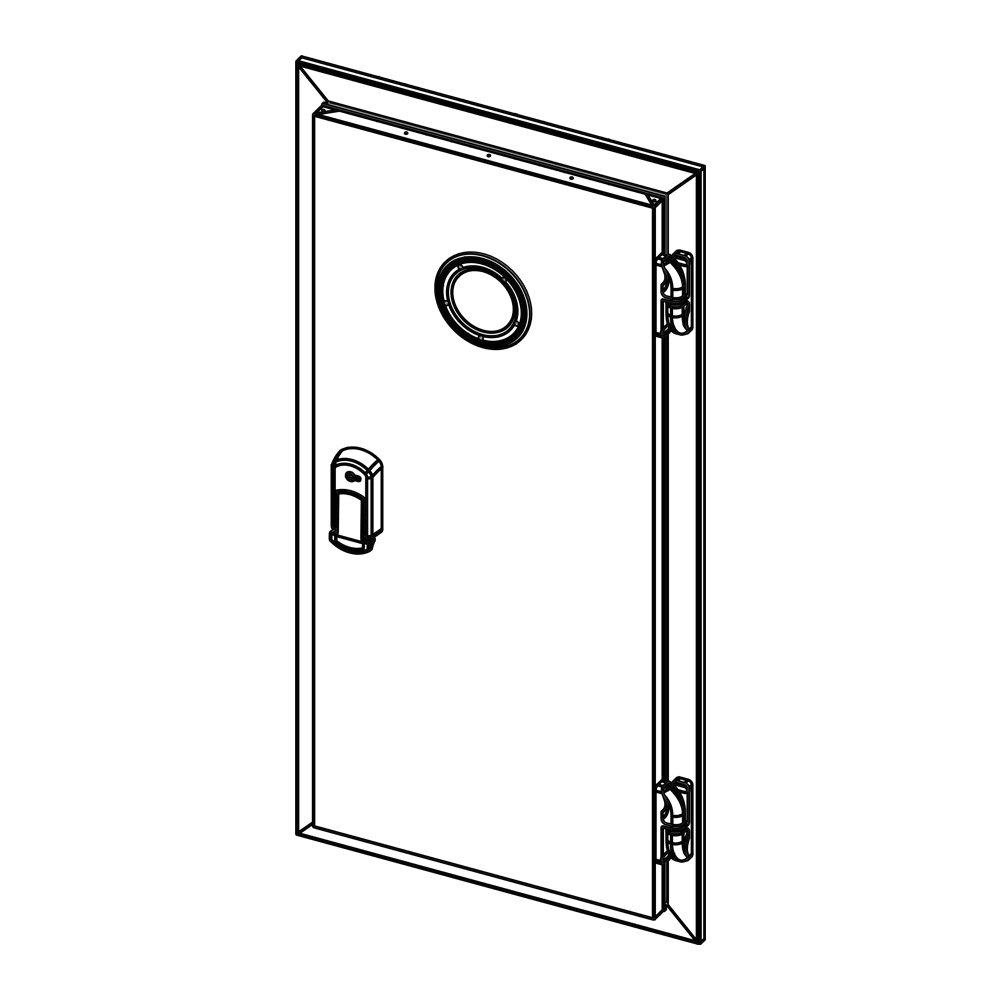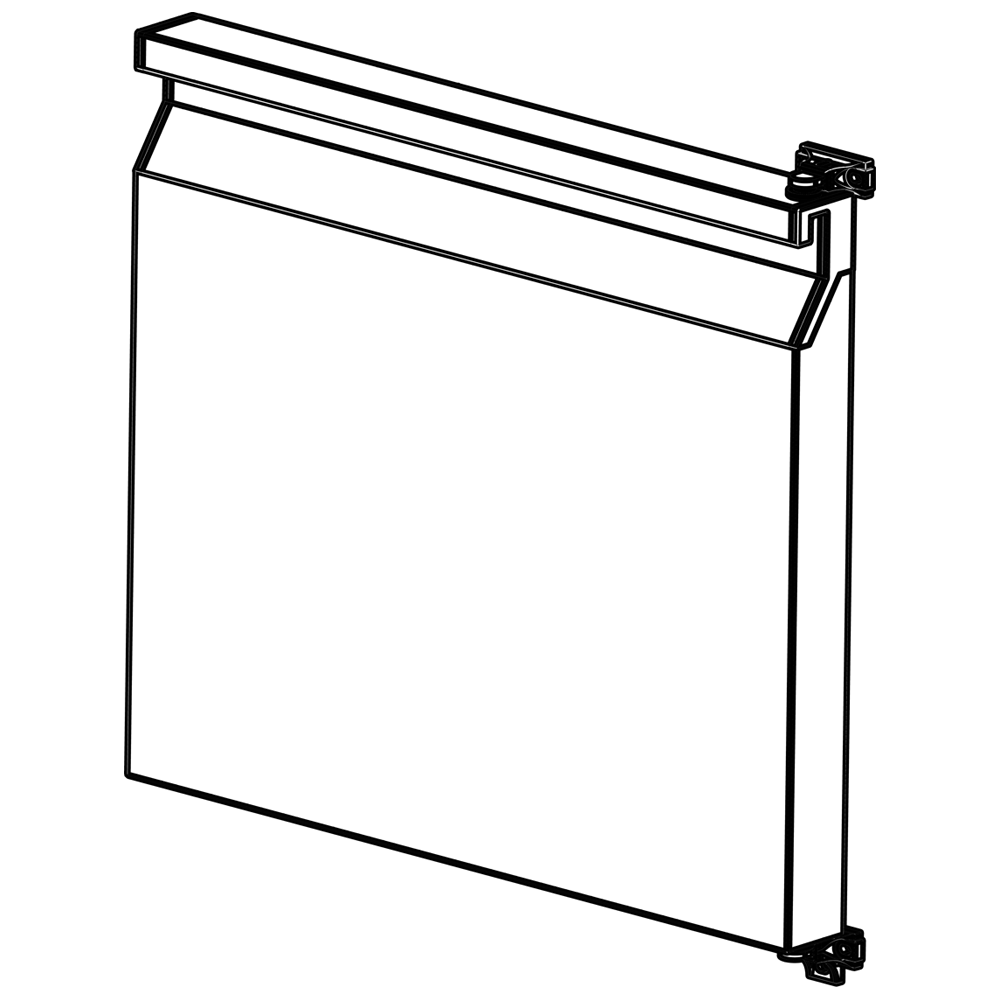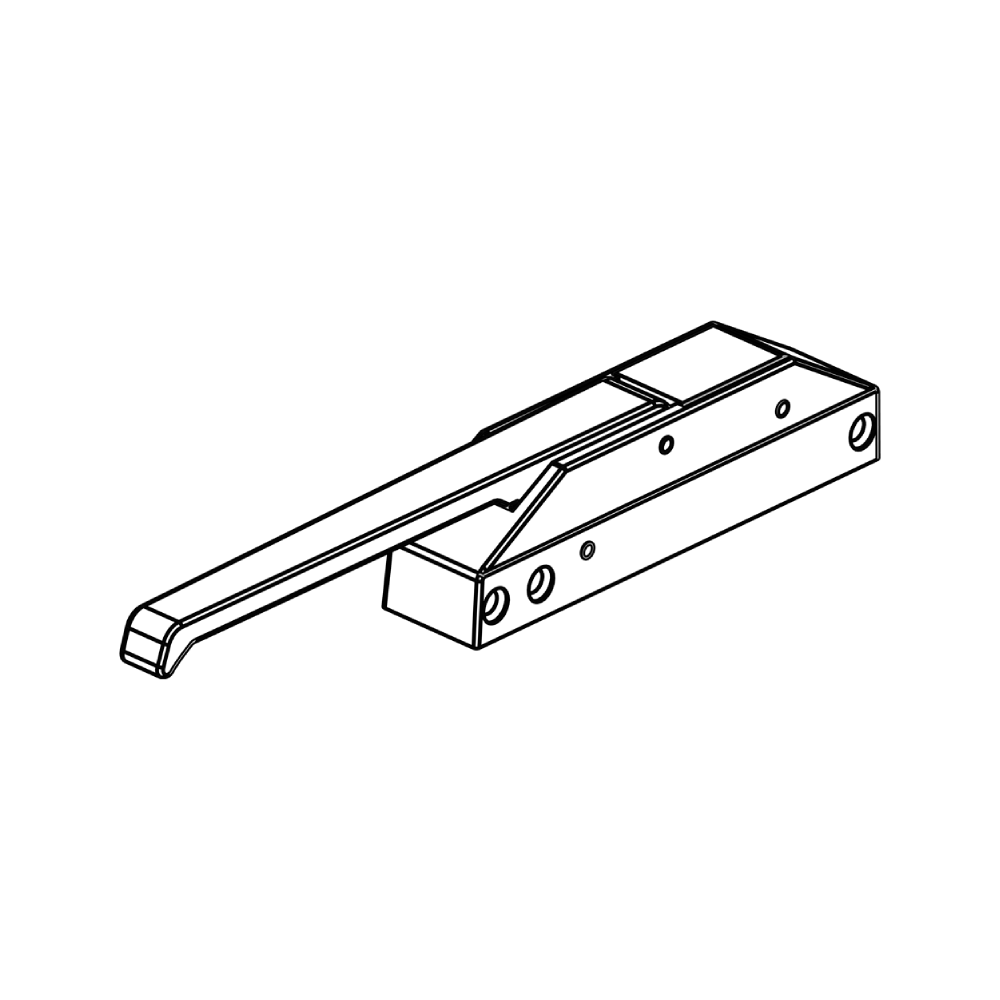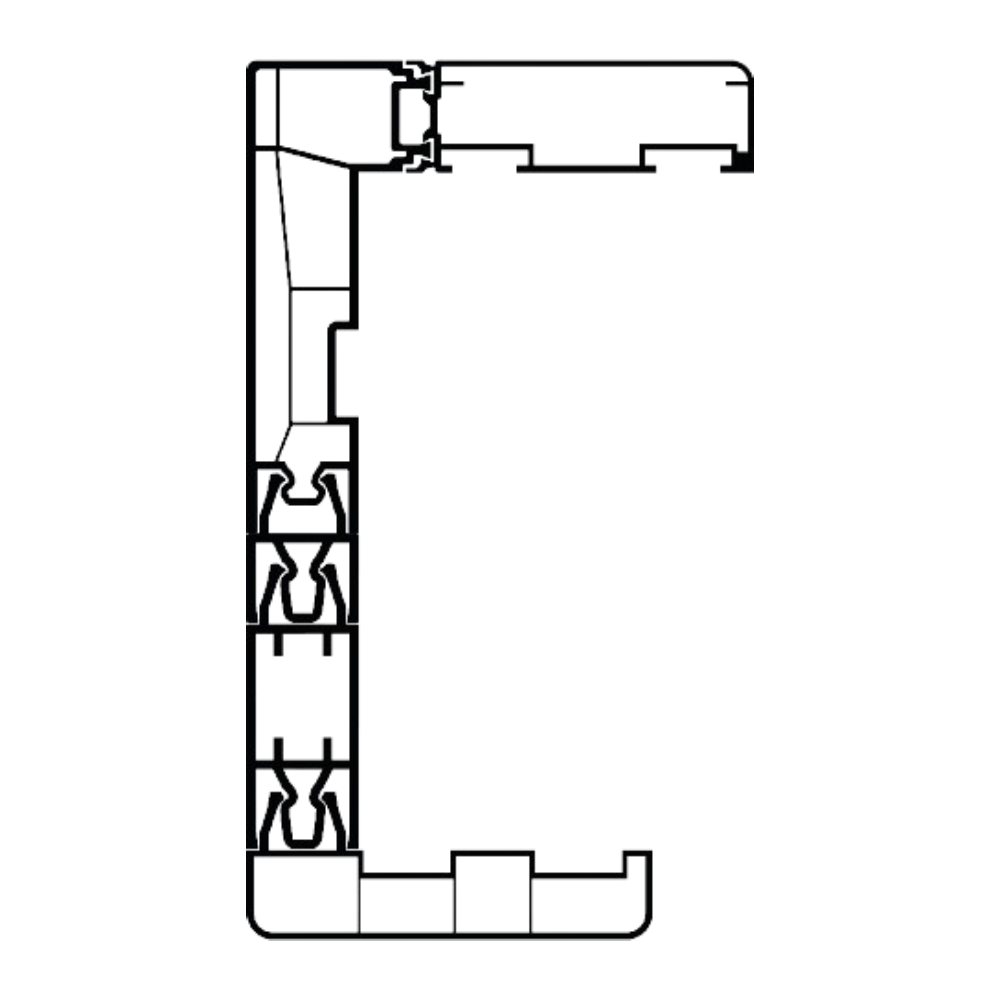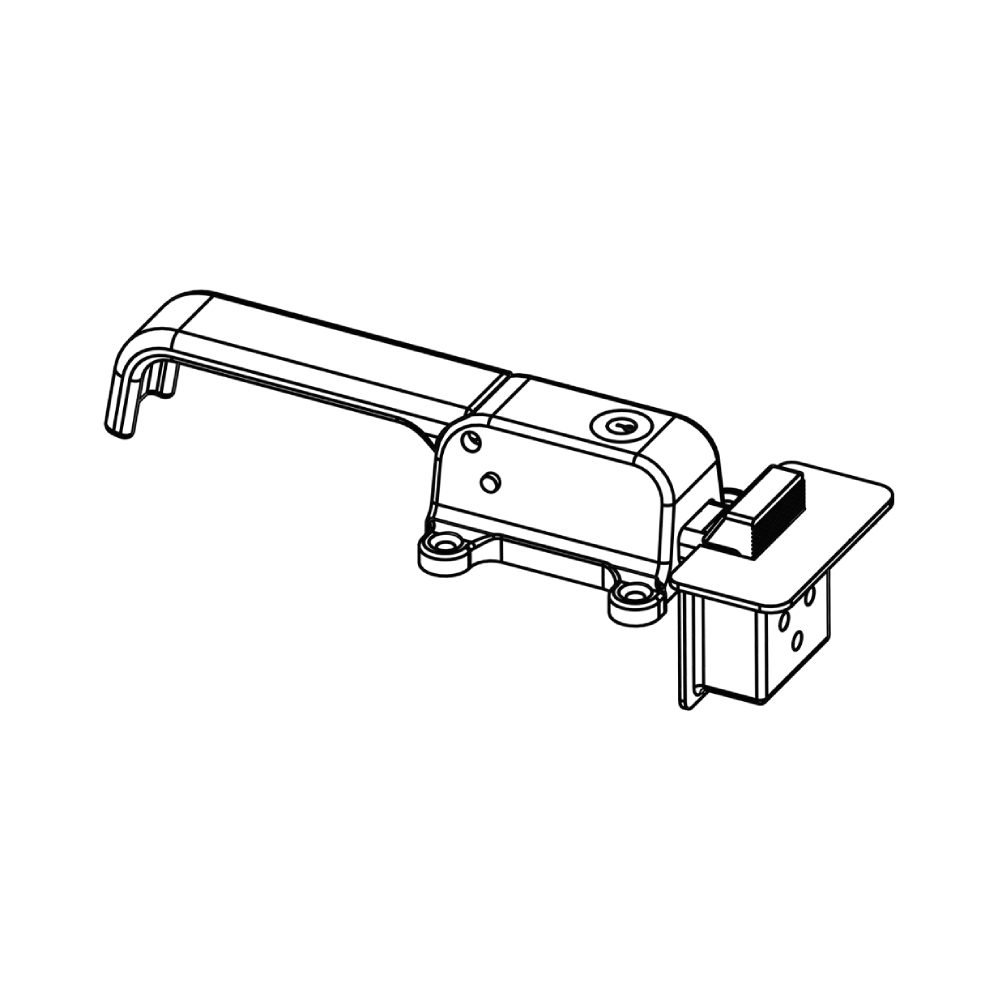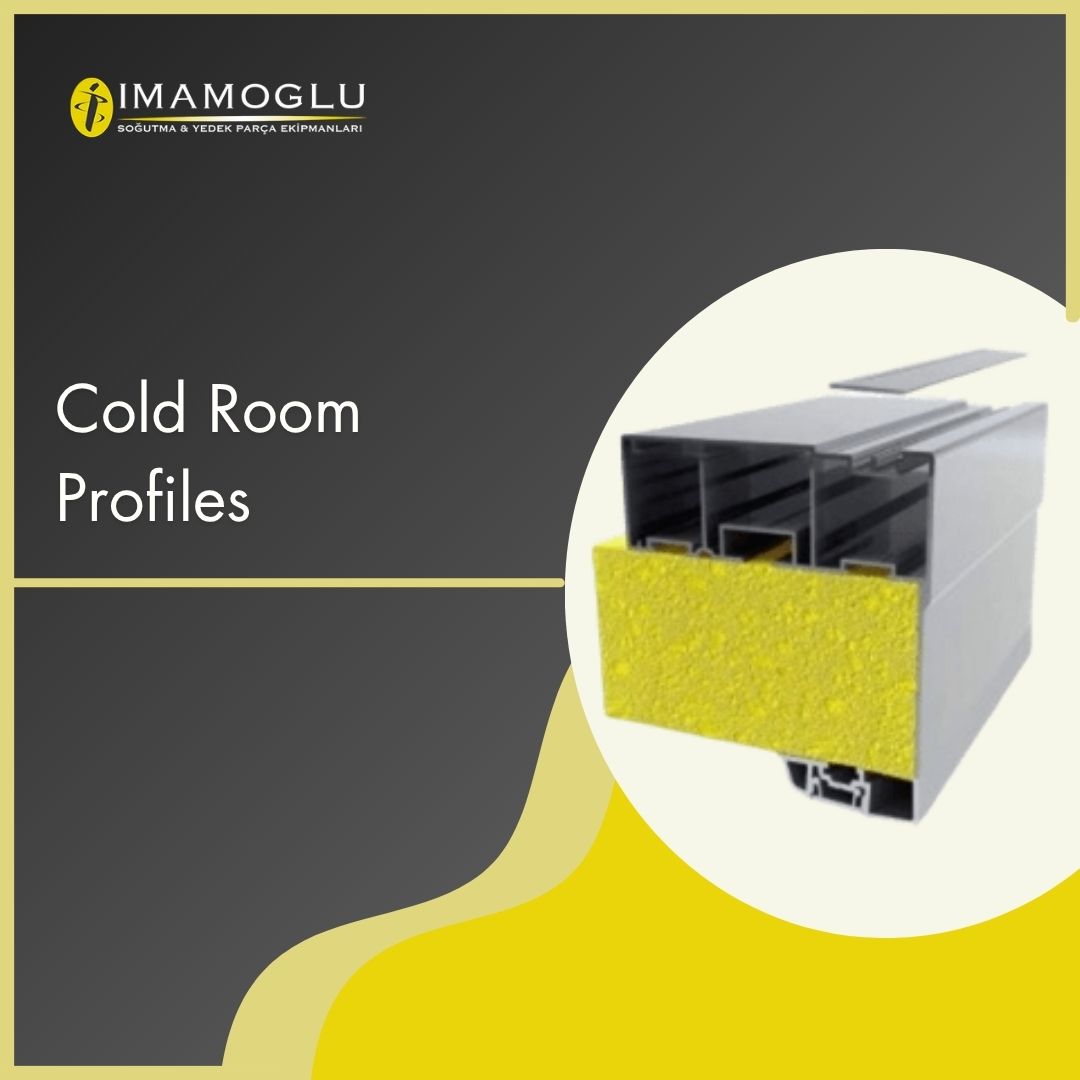Cold Room Profiles
What Are Cold Room Profiles?
Cold room profiles are essential structural components that ensure the structural integrity of cold storage facilities and support insulation performance. These profiles enable the connection of panels, ensure smooth transitions at corners and edges, and securely frame openings such as doors and windows. The type of profile used directly affects the cold room's airtightness, thermal insulation, and hygiene conditions.
Types of Materials Used
Cold room profiles are typically made from the following materials:
- PVC Profiles: Hygienic, corrosion-resistant, and easy to clean. Commonly preferred in the food industry.
- Aluminum Profiles: Lightweight and durable, offering aesthetic advantages. Anodized surface coatings enhance corrosion resistance.
- Stainless Steel Profiles: Used in areas with corrosive chemicals or where the highest level of hygiene is required, typically in meat and dairy processing facilities.
- Galvanized Steel Profiles: Cost-effective but require attention to surface coating. Can be supported with paint or PVC film.
Cold Room Profile Types
Cold room profiles are produced in various types depending on their intended use:
Joining Profiles
Enable the interlocking of panel-to-panel connections. Commonly referred to as "H profile" or "U profile." Available in different sizes such as 60 mm, 80 mm, or 100 mm, depending on panel thickness.
Corner Profiles
Used for 90-degree corner transitions in wall-to-wall and ceiling-to-wall connections. Divided into internal and external corner profiles. Critical for airtightness.
Floor Starter Profiles
Secure panels to the floor. Can be supported with insulated materials underneath to prevent thermal bridging between the floor and panel.
Door and Window Frames
Mounted around cold room doors and windows to ensure airtight and aesthetic transitions. These profiles are typically made from stainless steel or PVC.
Ceiling Suspension and Connection Profiles
Play a supportive role in preventing ceiling panel sagging in large-volume cold rooms. Work in conjunction with suspension systems.
Considerations for Profile Installation
- The installation surface must be flat and level; otherwise, gaps may form between profiles.
- Screws and fasteners used during profile installation should be stainless, supported with insulation materials to prevent thermal bridging.
- Special silicone or gaskets should be used at profile joints for airtightness.
- Hygienic and aesthetic transitions should be ensured, especially at corners and joints.
Hygiene and Ease of Cleaning
The inner surfaces of cold room profiles should not have sharp edges or protrusions. Profiles with rounded lines are preferred for ease of cleaning. This is particularly important for compliance with food safety standards such as HACCP and ISO 22000.
Contribution to Energy Efficiency
Well-designed and properly installed profiles prevent heat leaks, reducing the cold room's energy consumption. Structures that prevent thermal bridging allow cooling systems to operate less, achieving savings in energy costs.
Profile Design in Terms of Aesthetics and Modularity
With modern production technologies, profiles are not only functional but also add aesthetic value to the project. Colored PVC coatings, oven-painted metal surfaces, or custom section designs provide architectural harmony and ease of maintenance. Thanks to the modular system, profiles can be quickly installed on-site.
Standards and Certifications
Cold room profiles must be produced in accordance with national and international standards. Profiles used in food and pharmaceutical storage areas are preferably certified with the following:
- CE Certificate
- ISO 9001 Quality Management System
- Food contact compliance (EU 1935/2004)
- RoHS and REACH compliance
These certifications ensure both quality and long-term use.
Profile Selection Based on Application Areas
- Food Warehouses: PVC profiles and stainless coatings
- Pharmaceutical and Biomedical Warehouses: Antibacterial, easy-to-clean profiles
- Industrial Cold Storage Warehouses: Thick-section galvanized profiles resistant to mechanical impacts
- Store and Supermarket Cold Rooms: Oven-painted profiles with an elegant appearance
Profile Production Technologies
Cold room profiles are shaped using specialized production technologies. PVC profiles are typically produced via extrusion, while metal profiles are formed through pressing and bending. Surface treatments include electrostatic powder coating, anodized coatings, and PVC film lamination. These processes enhance durability and provide visual quality.
Connection Elements and Accessories
Various connection elements and accessories are used with profiles. These include screws, corner wedges, special gasket systems, clip-on fittings, and cover profiles. These components enhance installation practicality while reinforcing airtightness and durability.
Profile Protection During Transport and Storage
Profiles must be properly packaged to prevent damage before reaching the site. PVC profiles are typically wrapped with shrink film, while metal profiles are protected with kraft paper and foam pads. For long-term storage, profiles should be stored upright in a dry environment.
Issues Encountered in Field Applications
Issues encountered during the field application of cold room profiles can significantly impact the project's functionality and long-term durability. Therefore, the installation process must be carefully planned, using trained personnel and appropriate equipment. The most common problems in field applications can be categorized under the following headings:
Cutting and Fitting Errors
Incorrect measurement or cutting of profiles at wrong angles prevents panels from fitting properly. This leads to structural weaknesses and airtightness issues. Manual interventions instead of CNC machines during cutting increase error rates. Moreover, incorrectly cut profiles are often unusable, increasing costs.
Fixing Problems
Incorrect placement or insufficient tightening of screws, dowels, or connection fittings can cause profiles to loosen and shift over time. Such errors pose significant safety risks, especially in ceiling suspension profiles. Using galvanized or low-quality materials instead of stainless connection elements during installation leads to rusting and weakening of connection points over time.
Gasket and Airtightness Deficiencies
Inadequate application of gaskets at profile joints or insufficient use of sealing materials like silicone causes thermal leaks in the cold room. This reduces energy efficiency and places additional strain on the cooling system. Additionally, these airtightness errors create conditions for mold, fungus, and bacterial growth due to high humidity and condensation.
Floor Compatibility and Leveling Issues
Sloped or rough floor surfaces prevent proper placement of floor starter profiles. This disrupts panel alignment and causes uneven load distribution. Unleveled installations, especially in tall cold rooms, can lead to panel sliding and profile cracking.
Hygienic Application Deficiencies
In cold rooms serving the food or pharmaceutical sectors, profiles must be hygienic and smooth after installation. However, weld marks, sharp corners, or protruding screw heads in field applications make cleaning difficult. This poses a risk of non-compliance with food safety standards such as HACCP and ISO 22000.
Incorrect Profile Selection
In field projects, profile selection is often based on available materials rather than project drawings. This can lead to the use of profiles incompatible with panel thickness. For example, applying an 80 mm profile to a 100 mm thick panel complicates installation and causes structural issues.
Inadequate Inspection and Testing Processes
Insufficient post-installation inspections allow errors to persist unnoticed for long periods. When airtightness tests, leveling checks, and connection point inspections are not conducted systematically, issues emerge after operations begin, increasing intervention costs.
Lack of Training and Experience
Insufficiently trained teams or personnel working on the project for the first time directly increase error rates. Cold room installation is a specialized field. A small error during installation can negatively impact the entire system's performance.
To prevent all these issues, it is essential to use high-quality materials, detailed application plans, adequate technical supervision, and experienced on-site teams.
Custom Production Based on Customer Requests
In some projects, standard profiles may not suffice. In such cases, profile production in custom sizes and different sections is possible based on customer requests. Color, material thickness, surface texture, and profile geometry can be customized. This provides project-specific solutions in terms of both functionality and aesthetics.


